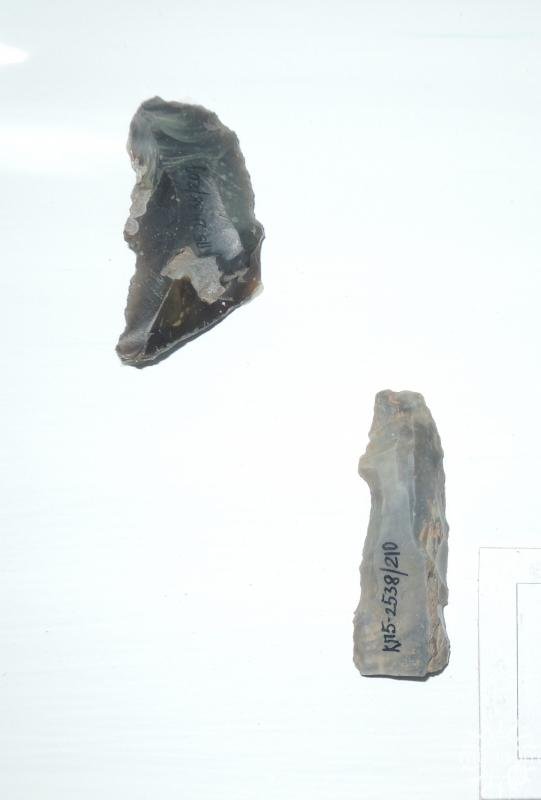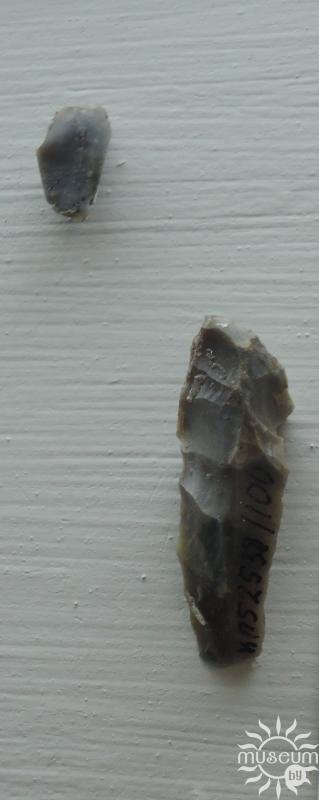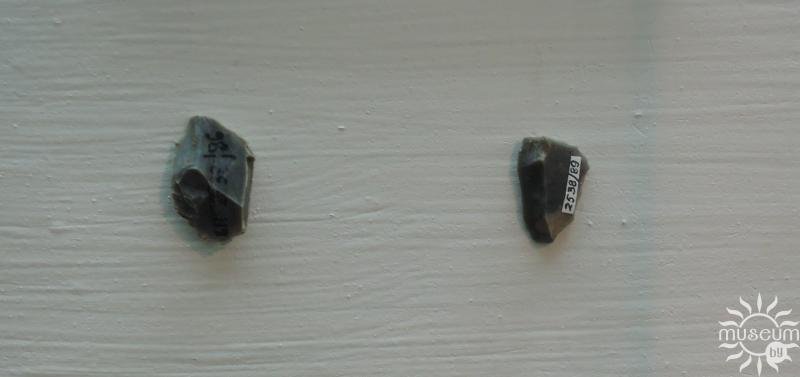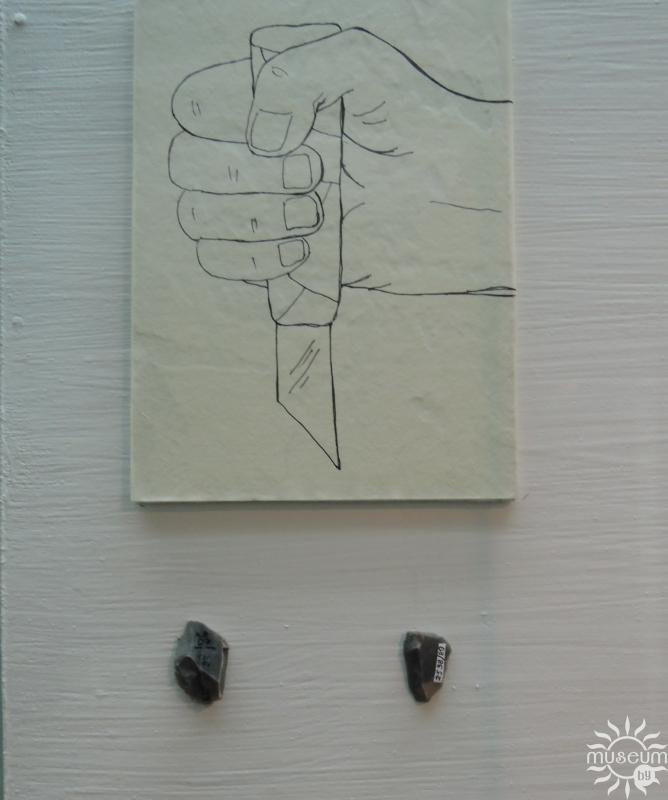The exposition of the Museum of Local Lore presents the oldest instruments of labor, made by the first inhabitants of our region in the distant Stone Age. The presented flint cutters, knives, scrapers, punctures belong to the Mesolithic period. The age of these finds is about 7 thousand years. The Mesolithic Age or the Middle Stone Age begins with the end of the Ice Age. Climate and nature have acquired the features of modern. The liberation of vast lands from the glacier allowed primitive people to master new spaces. Moving along the rivers, they gradually settled the main territory of our country. In Belarus about 300 Mesolithic sites were found. Two of them were found not far from Polotsk on the bank of the Western Dvina. Like most of the settlements of the time they were short-lived and occupied a small area. One parking lot is located near the village of Krumplevo, 30 km from Polotsk. The second was found in the village of Petrovtsy in the tract Semenov Khutor. On the territory typical items of the Mesolithic era were found: flint inserts, axes, punctures, fragments of arrowheads. All instruments of labor were distinguished by their small size and high processing technology. Cretaceous flint of very dark color served as the material.
During the Stone Age flint was collected by open cast mining. Primary processing of raw materials was a splitting of a large stone by a bump stop on flakes and thin plates. Then retouching and incision chips were applied to the tool. For this plate sharpened, i.e. with bone, small stone scales were pressed. So made tips of spears and arrows, knives. From small pointy plates people constituted the whole blade of a knife. The appearance in the 2 millennia of metals gradually replaced the flint as a material for the manufacture of tools. Mesolithic site in the tract Semenov Khutor was discovered by the archaeologist Nina Nikolaevna Gurina in 1957. After 10 years it was explored by the researcher of the Institute of History of the Academy of Sciences of the BSSR Ivan Mikhailovich Tikhonenkov. A total of 121 m2 of soil was opened. In 1968 a collection of flint inventory numbering 585 items was transferred to the Polotsk Nationa historical cultural museum-reserve.




